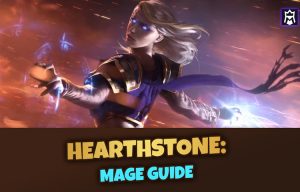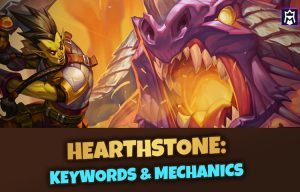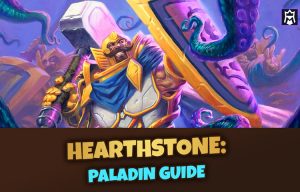Do you want to learn how to play Hearthstone and become a great deck builder and increase your chances of winning games? Great. Then you need to read our ultimate beginner’s Hearthstone guide. So let’s get started.
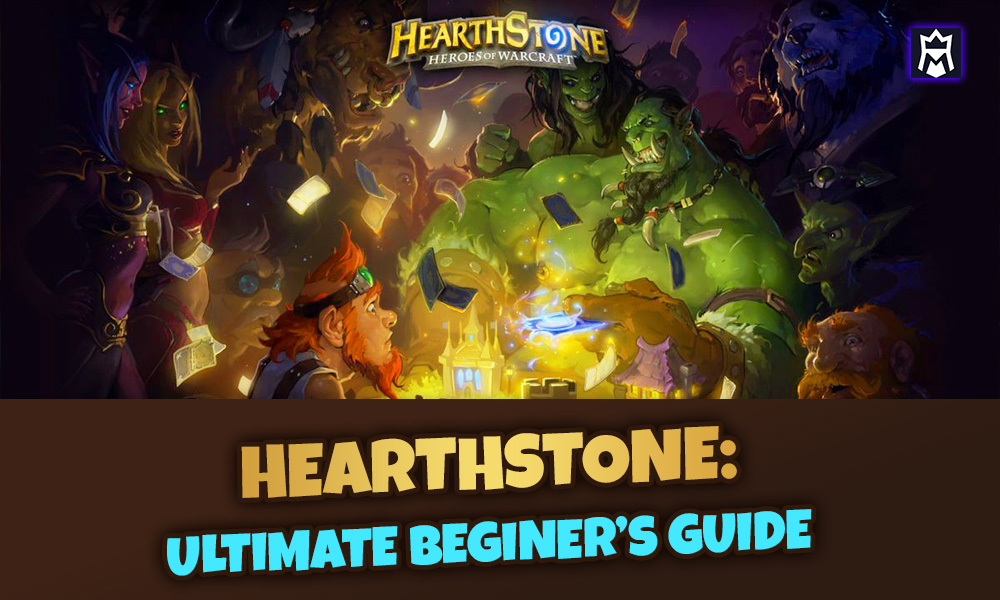
Basic Hearthstone Guide: How To Get Started Playing Hearthstone
As Hearthstone becomes even more popular, more and more new players are entering the scene and seeking out guides on how to get started playing the game.
Our beginner Hearthstone guide is meant to provide an introduction to the game, as well as answer many common questions novice players may have about Hearthstone.
This guide will help players grasp the foundational basics of Hearthstone, and then move on to some more advanced topics that will help players climb the ladder quickly and efficiently.
The below resource provides some basic foundational material for novice players. If you’re looking for more intermediate guides and information for all the different Hearthstone classes then check out the links at the end of this Hearthstone guide.
Also please keep in mind that if you have a question, suggestion or feedback that is not answered in the guide below you can drop us a comment, we would be happy to add the resource to our growing list.
Alright, enough about that, let’s get started. First, with some basic foundational material:
What is Hearthstone?

Hearthstone is a free-to-play collectible card game, or trading card game. If you are familiar with other TCGs (trading card games) such as Magic the Gathering, you are familiar with the basics of Hearthstone. If you are new to TCGs, don’t fret – Hearthstone has an excellent Tutorial that will help you understand the game in no time.
By playing against each AI opponent, you will earn the cards needed to complete your “basic” deck. You can switch Hero classes and battle new AI opponents, to earn all of the basic cards for each class.
To earn more cards, players can obtain booster packs containing five random cards (and at least 1 “rare” card) which will grant them cards beyond the basic set. These booster packs can be earned, or purchased in-game.
Players will then create a deck of cards centered around a theme or in this case “Hero” and battle the computer AI, or other real-life players. Battles take place in the following modes:
- Practice mode: Players play against the AI. This offers a good way for you to practice decks, learn more about the cards, and how to counter certain situations. There are two difficulty levels available in Practice Mode – Regular and Expert.
- Play Mode: This mode allows you to play against other human opponents. Before moving on to play mode, be sure to read through this Hearthstone guide, and build your own deck rather than using the default deck provided by the game.
Play Mode has two modes – “Casual Play” and “Ranked Play”. If you are new, it is advisable to remain as a Casual Player (which is the default option) until you become more familiar with the game and mechanics.
- Arena Mode: Arena mode is most similar to “drafting” in traditional CCG’s. You will be presented with 3 Heroes to choose from, and then will build decks on the fly by choosing one of three card’s until your deck is full.
You will then be matched against other players who have built a deck on the fly.
You will continue playing with this deck until you have three losses, at which point you will be rewarded based on your performance.
Because Arena mode makes you choose between randomized Heroes and cards, it is important to be very familiar with the game before entering the arena.
Each Hero has a different play style, and you will want to become more familiar with individual cards when building an Arena deck.
When building your deck, you choose a Hero class to focus your deck around. Heroes are based on characters from Warcraft lore and correspond to WoW classes.
Cards in these decks resemble abilities each class would have within the World of Warcraft universe. Currently existing Hero classes are:
- Mage (Jaina Proudmore) Hero ability – Fireblast: deals 1 damage to a character (minion or hero) and is not restricted by Taunt Minions.
- Priest (Anduin Wrynn) Hero Ability – Lesser Heal: Heals targeted mnion or hero for 2 health. If you have Auchenai Soulpriest on the board, your Hero Power deals damage instead of healing.
- Warlock (Gul’dan) Hero Ability – Life Tap: Deals 2 damage to the Warlock and draws a card. If the Warlock is at 2 or 1 health, the Life Tap ability will kill them.
- Paladin (Uther the Lightbringer) Hero Ability – Reinforce: Summon a Silver Hand Recruit. This does count toward Summoned units so will set off effects such as the Knife Juggler.
- Warrior (Garrosh Hellscream) Hero Ability – Armor Up!: Grants Warrior 2 armor. Stacks indefinately.
- Druid (Malfurion Stormrage) Hero Ability – Shapeshift: Grants Druid +1 attack and +1 armor for turn. The armor persists until broken, but the attack disappears at end of turn. Druids can attack enemy minion or enemy hero however attack is restricted by Taunt.
- Hunter (Rexxar)Hero Ability – Steady Shot: Deals 2 damage to enemy hero. This cannot target enemy cards. This is not restricted by Taunt.
- Rogue (Valeera Sanguinar) Hero Ability – Dagger Mastery: Creates a 1/2 (1 attack 2 durability) weapon for the Rogue. This can attack enemy minions or enemy hero and is restricted by Taunt.
- Shaman (Thrall) Hero Ability – Totemic Call: Summons a random totem out of 4 possible totems. The totem is considered a minion, and as such this counts toward spell effects triggered from summoned units such as the Knife Juggler. Shamans cannot have more than 1 type of each totem on the board at the same time. The 4 potential totems a Shaman can summon are:
- Stoneclaw Totem: 0/2 with Taunt
- Wrath of Air: 0/2 with +1 Spell Damage
- Healing: 0/2 totem that heals all friendly minions for 1 health at the end of the Shaman’s turn.
- Searing Totem: 1/1 totem.
How to Play Hearthstone
Getting Started
Before you can access many of the game features, you will have to complete the Tutorial. In addition we recommend that you DO NOT:
Spend Gold: As you progress through the tutorial, you will begin earning gold and may be tempted to spend it. We advise not spending your gold until you have read through this Hearthstone guide and have a more complete understanding of the game including how to earn more gold, and ways you can spend it.
Disenchant or Craft Cards: We recommend refraining from disenchanting or creating cards at this stage in the game. Once you have become more familiar with the game, cards, and building a deck you can check out our disenchanting guide.
Head into the Arena: Once you have unlocked all classes you will unlock the arena feature. Your first Arena game is free, but we do not recommend playing in the Arena yet – even using the free invitation.
Tutorial Mode
When you first launch Hearthstone, you will be taken through a tutorial that teaches you some of the basic beginning mechanics of the game.
Each player will begin as Jaina Proudmore, the Mage class. Each time you win a game against a Hero class, you unlock that Hero.
Once you have unlocked a Hero, you can play that Hero against other beginner level AI Heroes. As you play your Hero, you will level up and earn basic cards for your deck.
Once a Hero has reached level 10, you have earned all basic cards for that Hero’s deck.
When you have reached level 10, you can still play and level up your Hero to earn golden versions of each basic card.
The golden version of a card simply changes the look of the card, not the card mechanics.
It’s a good idea to level at least one hero to level 10 before continuing to other parts of the game, and only use Heroes you have leveled to 10 to enter “Play Mode” with.
Otherwise you may discover you don’t have all the cards you need to play effectively and beat your opponent.
Hearthstone Quests and Achievements
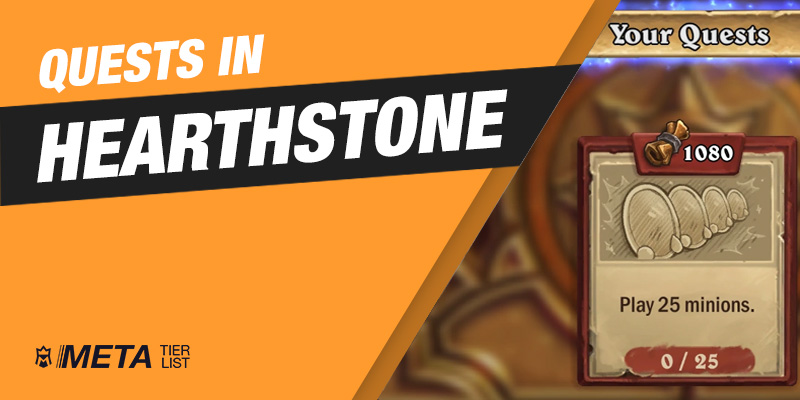
Once you have completed the tutorial, a number of other features will become available, such as quests and achievements.
Rewards will include gold, arcane dust, and cards.
Check our other HS pages for a complete list of Hearthstone Achievements, and our Daily Quest Lists.
Building a Deck
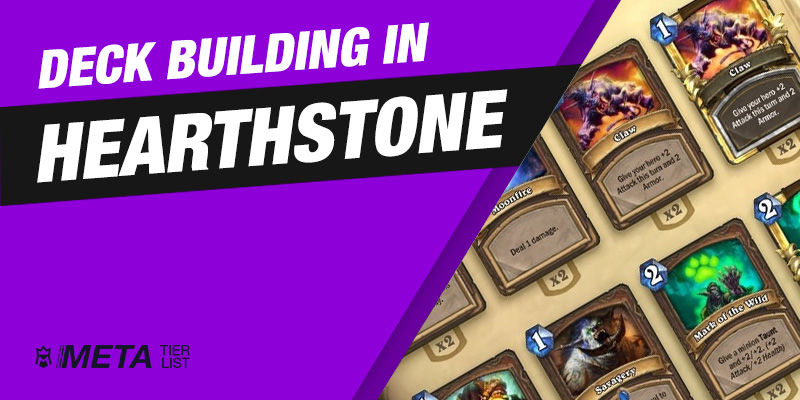
Once you have completed the tutorial and unlocked all 9 classes, we encourage you to begin building your first customized decks.
To create a deck, click on “My Collection” from the main screen. This will take you to an area that looks like a large book containing cards:
If you aren’t sure how to build your deck, or what cards should go into your first deck, Blizzard has a “Suggest a Card” option. This feature will walk you through building a mana-efficient deck.
However, the AI can only take you so far. To compete at higher levels, you will eventually have to master building your own deck.
Your deck should be built with the Hero you are playing in mind. For beginner decks which include the basic free cards, we have created beginner decks that you can build and/or customize to begin competing.
- Druid Deck List
- Hunter Deck List
- Mage Deck List
- Paladin Deck List
- Priest Deck List
- Rogue Deck List
- Shaman Deck List
- Warlock Deck List
- Warrior Deck List
It is advisable to complete the Level Up, First Blood The Duelist and Ready Go! Achievements, as this will provide you with two free packs of cards and an extra 200 gold. You can then use the packs of cards you acquired to modify your basic deck.
In addition, each deck should have a core strategy, and cards should be chosen which reinforce the strategy you have in mind.
We have a more in depth article covering deck types and their strategies that will provide more information once you get into advanced deck building.
Each deck must contain 30 cards, and may only contain 2 cards of the same type. If you have a legendary card available, you may only use one per deck.
We discuss deck building strategies more in this article, but for now, ensure you have a good mana curve by including a significant number of low-cost cards, moving up to just a few high mana cards.
Once you have played a few games, you will start to get a sense of which cards aren’t working well with your deck. You can edit your deck whenever you like to add or remove cards.
We recommend adjusting your deck as needed to slowly build a more powerful deck.
Decks made with all of the cards earned through playing the AI are decent, and can net you some wins and gold – but budget decks (decks using common cards as well as a few rare ones) will be more powerful and start earning you more wins.
The more you win, the more gold you can earn for new decks.
When building decks, keep in mind faster decks which allow you to quickly burn down your opponent and win the game, resulting in quicker wins – which means you are earning gold faster than a slower deck may allow.
Murloc decks make good fast decks.
Basic Deck Building Strategies
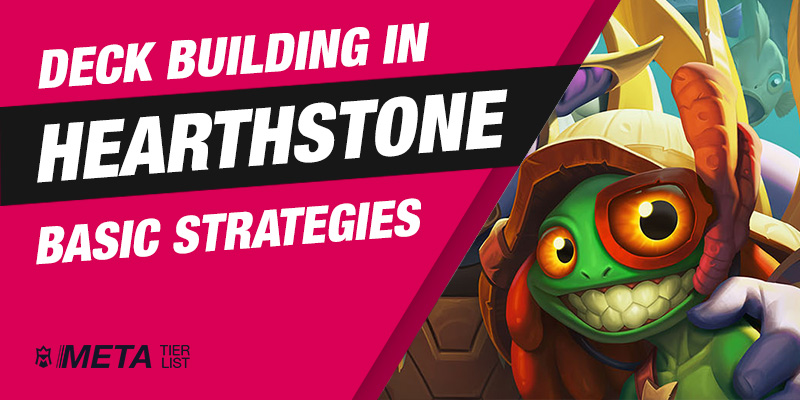
Once you have earned all of the free cards, it is helpful to know which cards are most likely to contribute to a winning deck.
Because you are playing with limited cards, you want to make sure you are working with the best cards possible.
This basic Hearthstone guide will discuss some of the best neutral-free cards to use in your deck. These are non-class-specific cards that can be used with any Hero you play with.
Once you have chosen your Hero, begin building your deck by choosing the best cards for that Hero, then fill up the rest of the deck with neutral creatures.
Remember to keep the mana cost of cards in mind when building your deck. If you have too many high-cost, powerful cards, you won’t be able to play these cards until late in the game – which can result in a quick defeat.
Start with a good number of low-cost cards so you can get in the game right away. This means choosing plenty of cards with a mana cost of 3 or less.
Cards that buff other cards are also great cards to have available. Shattered Sun Cleric, for example, can grant another minion +1/+1 and has good damage and health for its 3 mana cost.
It is best to play this card when you already have another card on the board that can receive this card’s buff.
However, don’t let yourself be drawn into a situation where you save this card while waiting for another card to buff first. If you have nothing to play, this should be played.
Another strategy is to ensure you get as many draws and playable cards in your hand as soon as possible.
One way to do this is utilizing “free draw” cards, such as Novice Engineer. The Novice Engineer is a decent, low-cost card, and if played before the Shattered Sun Cleric, can be buffed.
A great card to help keep your mana curve low is the Acidic Swamp Ooze. A 3/2 card for 2 mana is a solid card to start your game with, even if your opponent doesn’t have a weapon yet.
Having a card in your hand that you can play as needed, is better than holding on to a card for player use and having nothing on the board.
If your opponent does have a weapon, however, this ability can be a lifesaver. Use your best judgment with this card.
Charge cards allow you to attack immediately without having to wait for a turn. In early games, having a low-cost, decent damage card with a charge can save you or one of your cards from being destroyed too quickly.
A good card for this is Wolfrider, as the cost is only 3 mana and can deal three damage. His health is low, which means he will only last one turn unless he is buffed.
However, his ability can be a lifesaver in some situations. Wolfrider tends to work best in decks where the Hero doesn’t have a good damage ability, such as a priest.
But if you have the mana available and need to get rid of some quick cards, using Wolfrider in combination with your Hero power can quickly eliminate threats on the board while remaining mana efficient.
Another great free card to include is the Chillwind Yeti which is a 4/5 card for 4 mana – making the Yeti a solid, efficient card to include in your deck.
This card has a good chance of killing off 2 of your opponent’s smaller minions before the Yeti dies, which gives you a great card advantage.
Sen’jin Shieldmasta is a great card for free or budget decks. The reason Sheildmasta is so great is due to his high health, a 5 health card for a 4 mana cost is pretty good.
Be careful playing this card against Priests, however, as they have 2 mana cost Shadow Word pain which can destroy this card.
While much of your deck should focus on lower-cost cards, you will need some higher-cost cards for later rounds.
Depending on your deck, we recommend using 2- 4 of these higher-cost cards.
Frostwolf Warlord works well in fast decks that utilize a large number of low-cost minions. If you can get a lot of minions out by turn 4, and then get this guy out on round 5 you can put a lot of pressure on your opponent.
Boulderfist Ogre is good if you don’t have a lot of smaller creatures. His high damage and health means he can work well alone and with a team. This makes Boulderfist Ogre a great choice for any situation you find yourself in.
Stormwind Champion is great for slower burn decks that use a lot of creatures, and combos very well with charge abilities. If your Champion is already on the field, any charge card you play will immediately benefit from the +1/+1 of the Champion.
Crafting cards in Hearthstone
Hearthstone includes a feature that allows you to “craft” cards through disenchanting or creating a card. When you disenchant cards you are rewarded with arcane dust, which is used as a currency for crafting new cards.
The more rare the card, the more dust will be required to craft it.
When you first craft cards, you will complete the achievement Crafting Time, which will reward you with 95 arcane dust.
Before you disenchant cards, it is a good idea to know what is safe to disenchant.
As you open decks you will undoubtedly begin to acquire duplicate versions of cards. Having 2 versions of a card is okay, as each deck can have at least 2 of the same type of card in the deck.
However, having 3 or more versions of a card is a waste. You should disenchant these extra cards as you get them. Luckily, Hearthstone has a feature that will automatically disenchant cards the system recognizes as duplicates.
For your first crafts, we suggest cards with Silence abilities. Silence is an extremely useful mechanic to have in just about every deck.
The recommended neutral silence cards to fit a variety of situations include Ironbeak Owl and Spellbreaker. We recommend crafting one of each. Both of these will cost 40 dust each to craft, leaving you with approximately 15 Arcane Dust remaining.
At this point, you should save your Arcane dust for crafting additional cards in the future. Ideally, you should focus on crafting common cards because these are far cheaper than rare cards.
Having more common cards may be more beneficial than a single rare card would.
Other excellent neutral cards for basic decks include Harvest Golem, Amani Berserker, and Raging Worgen.
For more detailed information, check out our Hearthstone guide to disenchanting and crafting cards in Hearthstone.
Entering Constructed Play
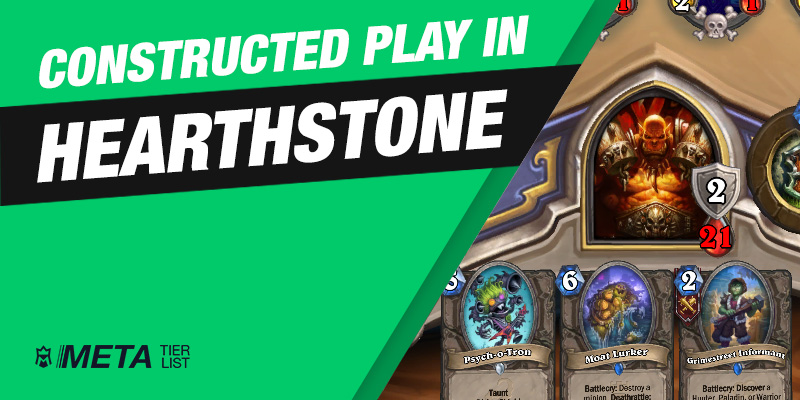
Constructed mode allows you to construct your own deck from the cards you have available, and play against another human.
Constructed mode will also allow you to win gold by beating other players. Currently, players can win 10 gold for every 3 wins in constructed.
Once you have built your first deck – it’s time to test it out. You can now click on “Play” and try out your deck against a real-life opponent. You will enter the game at unranked play by default.
Once you choose “ranked” play you will remain at ranked play until you switch it off. We advise not competing in ranked matches until you are more confident with your deck and abilities.
Once you have played in Constructed mode for a while, and have earned some gold – you can begin buying packs that will help you expand your deck.
Basic Hearthstone Game Strategy
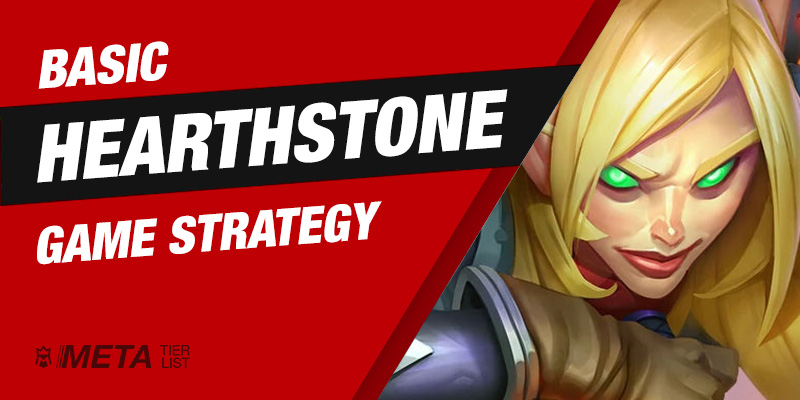
Now that we’ve gone a bit deeper into our beginner Hearthstone guide, let’s discuss a bit about some basic game strategies that you should know.
A good strategy for winning is ensuring you can get creatures out on the board quickly. When your creatures are played first, you get to choose which creatures will fight your opponent’s creatures first, which can result in advantageous match-ups and “trades.”
A “trade” is ensuring that you are removing your opponent’s card without sacrificing too much yourself.
For example, if you have a card with 2/1 attack your opponent’s card of 3/2, you have just made an efficient trade and eliminated a higher damage card for a lower cost/damage card of your own.
Here is an example:
For this example, let’s assume you are playing as a Rogue and you have Assassin’s Blade and SI:7 Agent in your hand.
On the board, you have a 4/4 Chillwind Yeti (which is damaged). Your opponent has a 3/2 Acidic Swamp Ooze, and a 3/5 Sen’jin Shieldmasta. This presents us with two different opportunities:
- Play your SI:7 Agent and attack your opponent’s Shieldmasta with your Chillwind Yeti. This will leave both the Shieldmasta and the Yeti at one health. You can then equip your Assassin’s Blade and finish off the Shieldmasta.
or
- Equip the Assassin’s Blade and play the SI:7 Agent’s combo mechanic against the Shieldmasta which would damage it, leaving it at 3 health. You can then kill it with your Yeti and finish off the Acidic Swamp Ooze with your Assassin’s Blade.
In both of these situations, you have made favorable trades, to get rid of more of your opponent’s cards without sacrificing too many of your own.
Entering the Hearthstone Arena
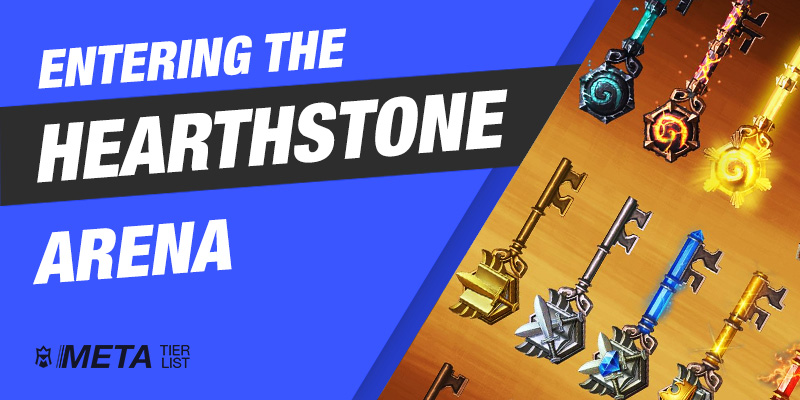
You can play Arena at any time as long as you have the gold, or are willing to throw down real money to play.
The arena costs 150 gold to enter, with the first Arena being free. Keep in mind that 150 gold equates to 45 wins in Constructed play.
You will get rewards for winning the Arena, and the amount of rewards received will depend on the amount of games won. In general, it takes 7 wins in an Arena round to break even.
Although the Arena option is available at the start, we recommend playing Constructed Ranked play for a while to get a good grasp on the game, card synergies, and tactics before moving on to Arena.
It is commonly recommended that new players reach 3-star ranked play in constructed prior to moving into the Arena.
Because the Arena costs gold or real money, you want to give yourself the best chance of winning Arena and avoid wasting your gold and/or money.
Conclusion for our Hearthstone Guide
This beginner Hearthstone guide contains the basic rules of the game. If you’re new to Blizzard’s CCG, the information here will serve as a good primer and will enlighten you about the reasoning behind various things in the game, even if you don’t agree with it. But hopefully you have found this HS guide useful.
For the beginning Hearthstone player, there are a lot of things to adjust to in terms of learning proper combat tactics, keywords and mechanics, and deck optimization.
But overall, Hearthstone is a simple game to pick up and play casually. There are certain things you should know as a beginner, but eventually, if you just play normally, Hearthstone should prove quite simple to learn.
Fortunately, there are plenty of resources out there for both players who are new to the game and returning veterans who want to make sure they hit all their bases so make sure you check out more of our HS guides below.
Even more Hearthstone Guides
So even though we have finished with this beginner Hearthstone guide, there are still a lot more things that you can discover and learn about Blizzard’s collectible card game.
For more in-depth articles and Hearthstone guides check out more of our content:
- Deck Building Guide
- Hearthstone Mana Curve
- Deck Types in Hearthstone
- Hearthstone Crafting & Disenchanting Guide
- What Legendary Cards To Craft First in Hearthstone
- How To Earn Gold In Hearthstone
Was our Beginner Hearthstone Guide helpful? Comment & rate it below!
Check our tier lists for games, explore our gaming guides, or read the META gaming news. You could also like us on Facebook and follow us on Google News and Twitter to stay updated with our content.

